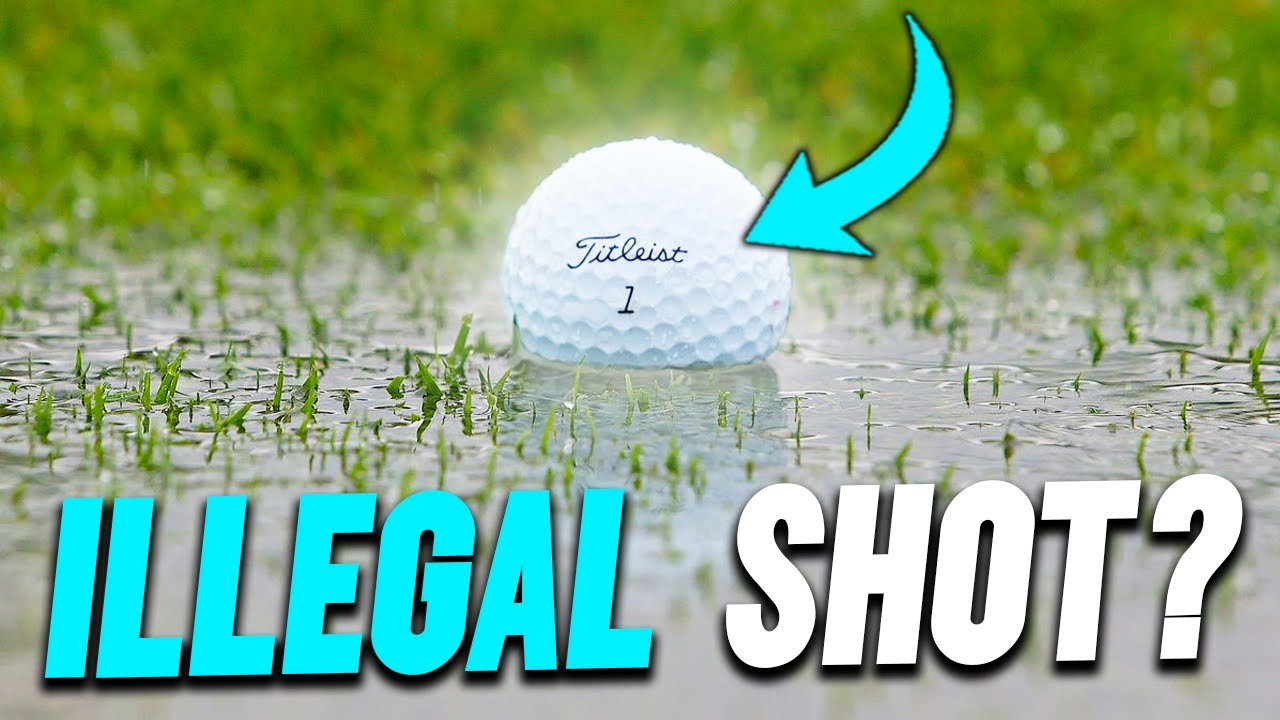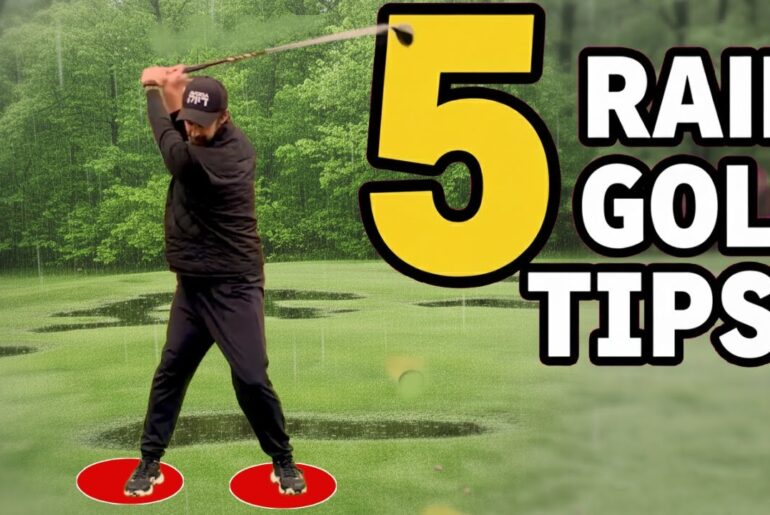👉 Get 10% Off Stix Golf: https://stixgolf.sjv.io/c/6575631/1455266/13262
Did you know you can be penalized in golf for rules you’ve never even heard of?
In this video, we break down 7 real golf rules that are commonly misunderstood or broken by beginner and casual players — without even realizing it.
Whether you’re playing a weekend round or entering your first tournament, knowing these rules will help you play with confidence and avoid unnecessary penalties.
What you’ll learn:
– 7 illegal moves that can cost you strokes
– Rules that most beginners accidentally break
– When you can (and can’t) move your ball
– How to stay compliant without overthinking every shot
This is a great refresher for new players and returning golfers — and can save you strokes and awkward moments on the course.
🔔 Subscribe for more trusted golf tips, rules breakdowns, and beginner-friendly guides:
https://www.youtube.com/@TheSwingFix?sub_confirmation=1
#GolfRulesExplained #IllegalGolfMoves #BeginnerGolfTips #GolfPenalties #GolfForBeginners
You’re lining up an easy putt when bam, a squirrel bolts off with your ball, or your chip shot lands in a tractor sized divot. It feels like bad luck, but both could change your score in ways you’d never expect. Golf might look calm and polite, but its rule book hides bizarre game changers that can cost you strokes or even a tournament if you don’t know them. These are the real quirky rules that make golfers shake their heads and yell, “Wait, what?” In this video, we’ll go through the strangest and most impactful rules. What happens if an animal moves your ball, why you can’t always ground your club in a bunker, why your ball might be lost after just 3 minutes, and more. I’ll explain each rule, give you a real world tip, and point you to the official wording so you can verify it later. So, without further delay, let’s start with the first one. The squirrel ate my ball. Animal interference. If an animal nudges, touches, or moves your ball at rest, the rules treat that as an outside influence. You replace the ball on its original spot and play on. But there’s some nuance to this rule. If the animal is still there, removing it could cause the ball to move and create a penalty situation. That’s why local rules sometimes include guidance on removing animals safely. Embedded ball relief, not just in the fairway anymore. If your ball is embedded in its own pitch mark, you may get free relief in the general area unless it’s embedded in sand. This used to be limited to the fairway, but now relief applies almost anywhere in the general area. When you hit a fat shot and the ball buries itself, knowing this rule can save you a stroke or two. Always check for a pitch mark before you play it. And the next rule has quietly cost weekend golfers more penalty strokes than any other change in recent years. The 3minut lost ball rule. Times up faster than you think. You now have 3 minutes, not five, to find a lost ball. The change was made to speed up play, but it means you and your group must be organized from the moment the search starts. If you can’t find the ball in 3 minutes, it’s lost and you proceed under stroke and distance. That 2-minute cut has even changed how pros and marshals search in tournaments. You can touch sand in a bunker, but not too much. You can move loose impediments in a bunker and even touch the sand with your hand or club when assessing your shot, but you still can’t take a practice swing that touches the sand in a way that improves your lie or tests the conditions for advantage. It’s a fine line between allowed and improving, which is why bunker etiquette still trips people up. The next few rules have actually disqualified pros, so knowing them could save you more than just strokes. Hit the flag stick, no penalty, mostly. The days of being penalized for hitting the flag stick from the green are gone. You can now leave it in or have it attended and there’s no penalty if your ball hits it. This change speeds up play, but some golfers believe the flag stick affects ball roll. So test it and decide for yourself. But while the flag stick rule is forgiving, this next one is brutally unforgiving, and it’s caught out players in everything from weekend rounds to major championships. Playing the wrong ball costly, common, and very real. Playing the wrong ball is more than embarrassing. It’s penal. In stroke play, you get two penalty strokes and must correct the mistake. In match play, you lose the hole. It happens more often than you’d think, even to pros. Always mark your ball clearly to avoid this. Ball moved after address who replaces it. If your ball moves after you address it, say from the wind, replace it on its original spot and play on. There’s no penalty in many common cases, but intent matters in certain rulings. The emphasis now is on replacing and continuing play rather than piling on penalties for things out of your control. But be careful of tricky rulings where intent matters. You can’t always ground your club. Know the bunker won’t water distinction. Grounding your club is okay in many places, but bunkers and penalty areas are different. The no grounding restriction in bunkers still prevents you from testing the sand or improving your lie. In penalty areas, grounding is often allowed, but there are complexities depending on the relief taken. The takeaway: Always check which area you’re in before planting your club. Basing your decision on whether you’re in a bunker or penalty area changes allowed actions dramatically. The flag staff, the cup, and unattended conditions, subtle, but important. If your ball hits unattended movable obstructions or the flag stick is mishandled, the rules detail how to replace, take relief, or assess penalties. It’s a small thing, but confusion here slows play and sparks arguments. Coming up, rules involving tractors, trees, and even animals that could give you free relief or cost you a stroke. Tractor damage, animal holes, and other offc course features. Course maintenance and wildlife can create some strange course conditions. Tractor ruts, rabbit holes, or other damage. Many are considered abnormal course conditions, and you may get free relief unless your ball is in sand or restricted zone. When in doubt, check the relief rules. They can be surprisingly generous. Ball stuck in a tree. Yes, that happens. If your ball is lodged in a tree or bush, treat it as unplayable. Take relief under the unplayable ball rules, usually with a onestroke penalty. Don’t try to climb or knock it down. It’s not worth the extra penalties. Best call, take relief, save your back, and score. Wrong scorecard and disqualification. Not just for pros. Signing for the wrong score can disqualify you in stroke play. It sounds brutal for amateurs, but the rule exists to keep honesty in the game. If you sign for a lower score than you actually made, you’re disqualified. Sign for higher and you keep the high score. It’s an odd old school rule, but it’s enforced to protect the integrity of the competition. Real world payoffs and penalties. Why this matters? These aren’t just trivia. These rules decide rounds. From amateurs losing strokes to pros being disqualified, the rule book shapes every game. The 2019 modernization removed some frustrations like the flag stick penalty, but also created new nuances you need to know. Here are a few quick practical tips so you don’t get burned. If an animal moves your ball, replace and play on unless a local rule says otherwise. If your ball is embedded in turf, not sand, claim relief in the general area. Check local rules first. Start your search clock immediately. You only have 3 minutes now. Don’t assume you can ground in a bunker. The details matter. Always mark and identify your ball clearly on the tee in green to avoid playing the wrong ball. If a ball is stuck in a tree, treat it as unplayable and take relief rather than risking penalties. There’s a reason that these golf rules got so weird. Golf’s rules evolved through centuries of tradition, etiquette, and weird edge cases. The 2019 update sought to modernize play, speed it up, make it less punitive and accidental cases, and clarify old gray zones. But modernization creates its own oddities. Local committees add more and humans being humans make mistakes that create new weird cases. That’s part of the charm. Golf is a rules game that keeps you honest, keeps you guessing, and sometimes makes for great stories to tell at the clubhouse. So, next time a goose eyeballs your T-shot, a raccoon nudges your ball, or a tractor ruins your lie, you’ll know the play. These rules sound strange, but they exist to balance fairness with common sense. If you like this deep dive, hit like, subscribe, and share your weirdest golf rules story in the comments. And stick around. Next time, I’ll cover the rules most golfers get wrong and how you can use them to your advantage.








1 Comment
Be honest — have you accidentally broken any of these rules before? 😅
I didn’t realize #4 was a thing until I saw it happen on the course. What’s a weird rule you’ve seen (or broken)? Let’s compare notes 🏌♂👇